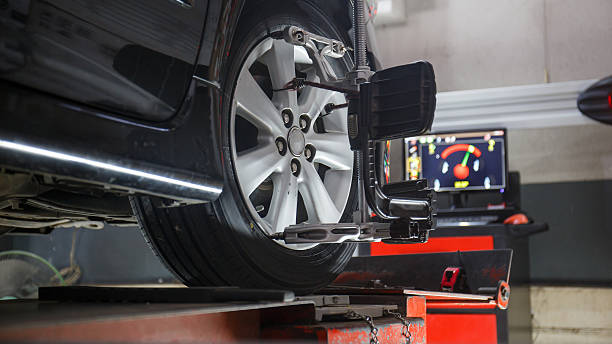What happens during a wheel alignment?

Most vehicle owners are familiar with wheel alignment service in sydney and their importance for safe driving. Many people neglect to get their wheels aligned. This is often because they are too busy, don’t have the budget, or don’t believe it is necessary for their vehicle’s health. Unfortunately, they’re wrong.
To avoid expensive breakdowns and mishaps while on your next family trip, you need to have your car checked regularly. The safety of your car is an important consideration for anyone with children.
Aligning your car’s wheels can save you money over the long term and increase the life of your tires. Your new aligned wheels will make driving safer for everyone on the road. Tire problems can lead to serious car accidents and wear and tear to your vehicle.
An overview of the steps involved in wheel alignments will help you better understand its importance.
Wheel Alignment 101
The mechanic will usually test drive your car around the city before they take it to the tire shop or mechanic. This allows them to verify that the problem is indeed there. The vehicle owner may assume they can fix the problem and request an alignment. In reality, the car may be steering poorly or not turning properly for various reasons. The mechanic will look for signs such as the vehicle pulling in one direction, tires that squeal on low speeds turns, or a steering wheel that is not centered.
After the problem has been identified, the mechanic will prepare the vehicle for the wheel alignment. Many auto shops have detailed records of every vehicle they repair and will include each vehicle’s make, year, model, and design in their database. All current information can be accessed by scanning the Vehicle Identification Number. Your auto shop can use the car’s details to determine the OEM’s specifications for alignment.
The mechanic takes the data and drives the vehicle onto an alignment rack. The car is then raised to a safe working height and secured on the rack. Also, the mechanic will inspect the tires for uneven or irregular wear and check the front end and the rear axle for any problems.
Common Problems with Wheel Alignment
Broken coil springs, a loose bearing, or issues with the steering and suspension are all common problems. Mechanics will fix or replace these issues before they begin the alignment process. Before removing the hubcaps, will adjust the tire pressure according to OEM specifications.
The mechanic then mounts the targets to the wheels to meet the manufacturer’s requirements. Most alignment racks require that the alignment head be attached to all wheels. This is true even if the mechanic only needs to adjust the front wheels. Many Front Wheel Drive (FWD) models allow adjustments to be made first to the rear wheels before any FWD adjustments.
Wheel Alignment Adjustments
There are unique methods that can measure the current chamber and the caster angle depending on the equipment and systems available at an auto shop. A symptom report will be printed by shops with the latest systems and computers. This report can then be shown to customers to help them decide their options. Before moving on to the toe angles, the mechanic must first fix the camber and caster adjustments.
After adjusting the toe angles and making other adjustments, the mechanic will restart the car. He will then remove the steering lock and turn the wheel back and forth several times. This will give the mechanic an indication of how the alignment went and what to do next. Once the alignment is complete, lock the steering wheel and re-center it.
The alignment heads should be removed before the car is placed on the garage floor. To ensure that any issues or symptoms they have noted are not repeated, the employee should test drive it. Any other noticeable issues should be addressed.
Wheel alignments are not difficult to do. However, taking them as a given is easy and then deciding that you will delay the process for a few months. You don’t want to risk your car’s health or your safety by skimping on your service. Properly aligned wheels will save you time and money and protect you and others on the roads.




Leave a Reply